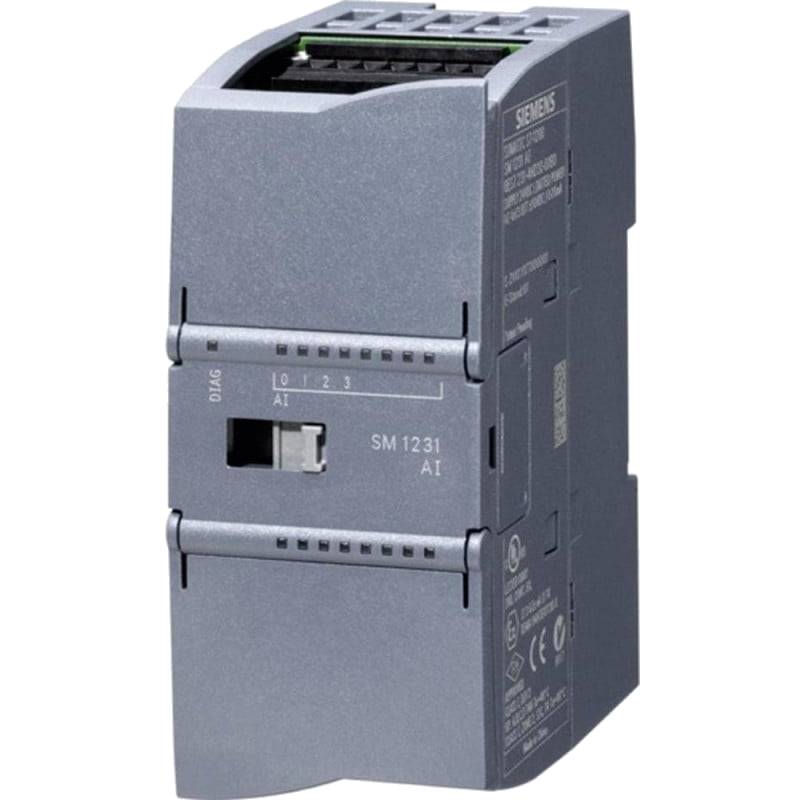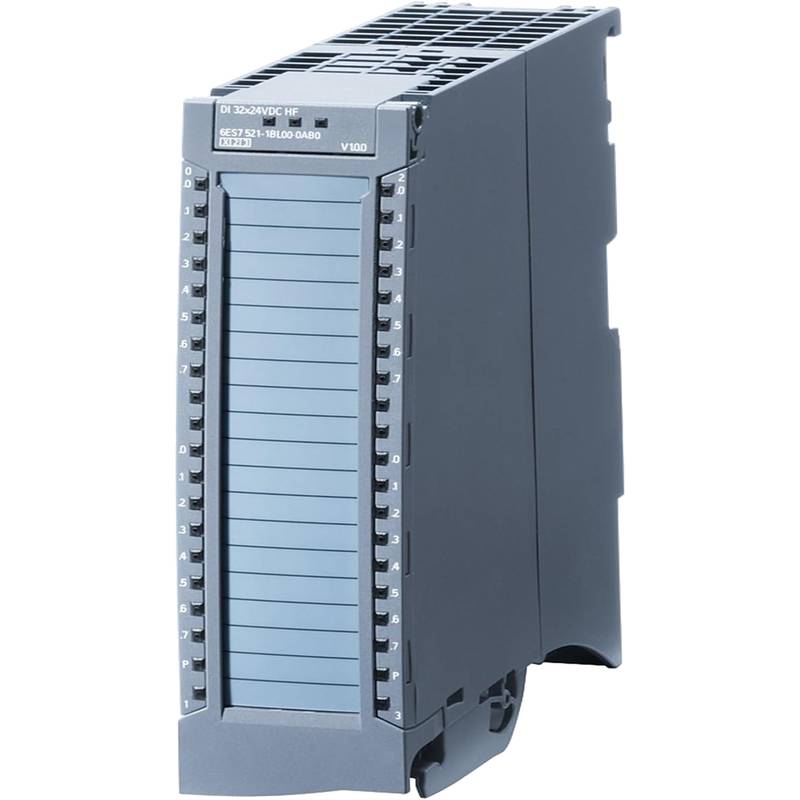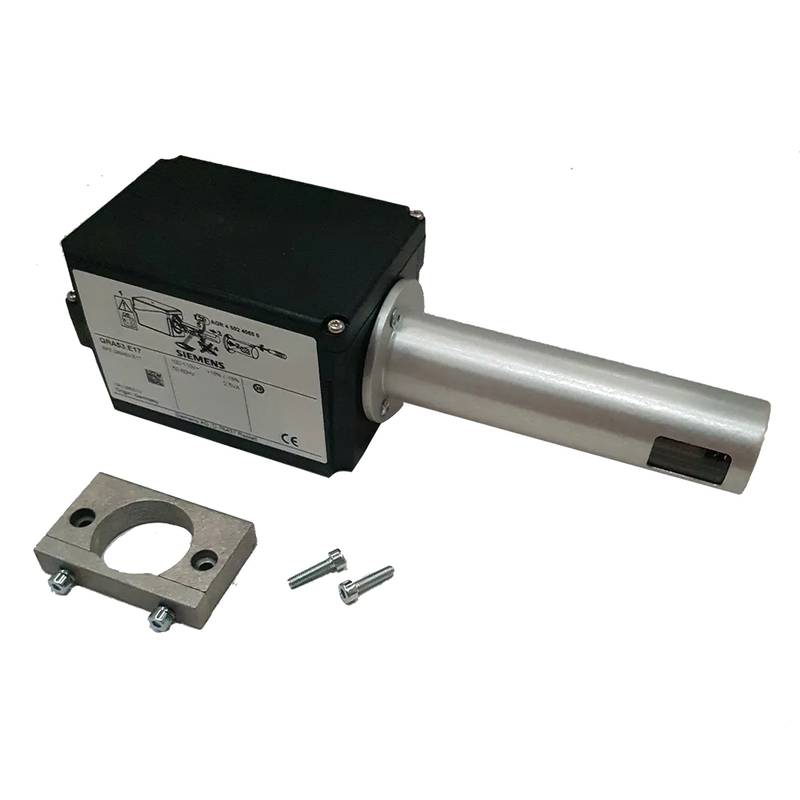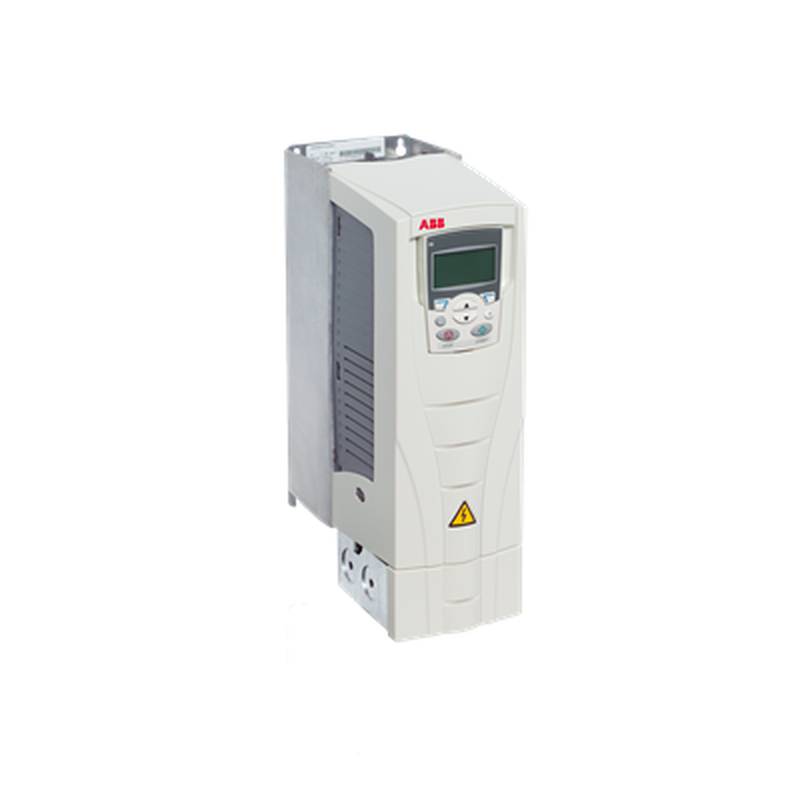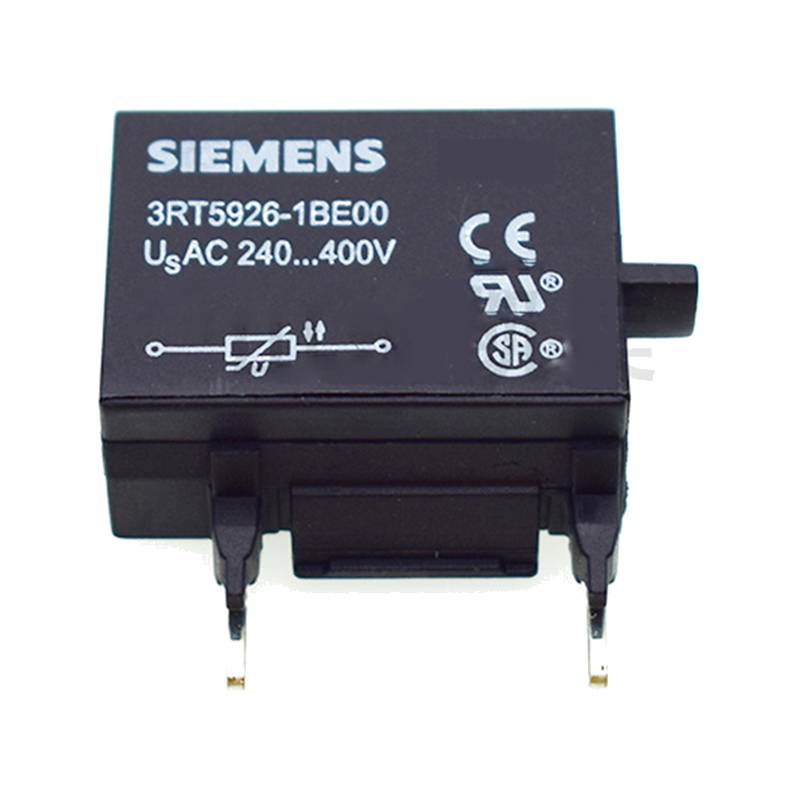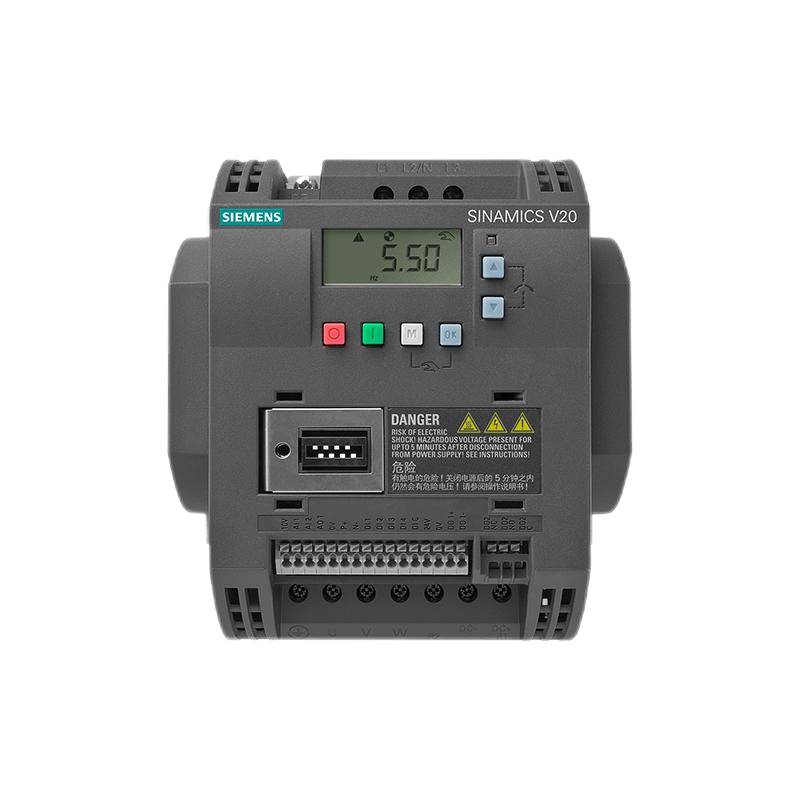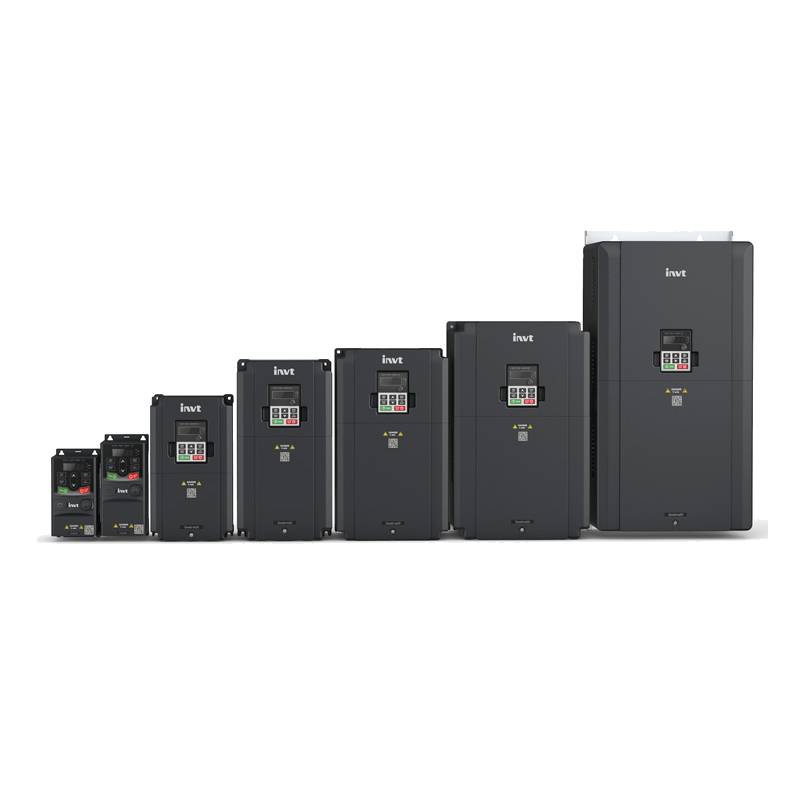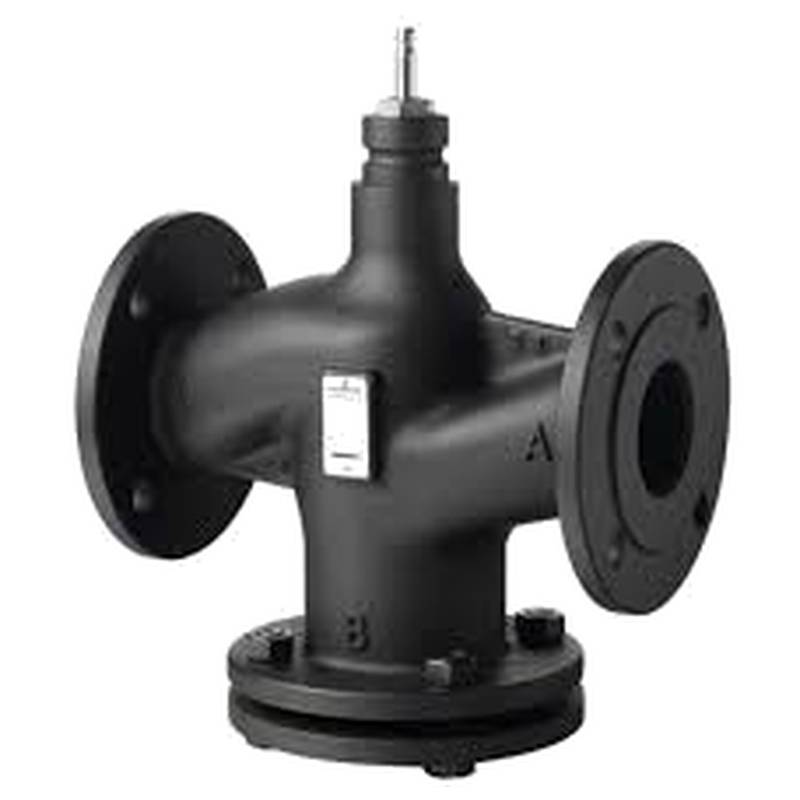
The Siemens 6ES7231-5ND32-0XB0 SM 1231 is an 8-channel, 16-bit analog input module designed for the SIMATIC S7-1200 PLC system. This module is engineered to provide high-precision analog signal acquisition, crucial for diverse industrial automation tasks. Its key advantages include its robust design, excellent signal resolution, and seamless integration with the S7-1200 platform. The SM 1231 module offers significant flexibility with its support for multiple input ranges, including voltage and current signals, enabling it to interface with a wide array of sensors and field devices. The 15-bit + sign bit resolution ensures highly accurate data conversion, vital for processes demanding precise control and monitoring.
Product Specifications
| Feature | Specification |
| :----------------------- | :----------------------------------------------------------------------------- |
| Product Number | 6ES7231-5ND32-0XB0 |
| Module Type | SIMATIC S7-1200 SM 1231 Analog Input Module |
| Number of Channels | 4 |
| Resolution | 15-bit + sign bit (16-bit equivalent) |
| Input Ranges (Voltage)| ±10 V, ±5 V, ±2.5 V, ±1.25 V |
| Input Ranges (Current)| 0-20 mA, 4-20 mA |
| Accuracy | Typically ±0.1% of full scale at 25°C |
| Conversion Time | Max. 100 µs per channel |
| Supply Voltage | 24 V DC |
| Current Consumption | Typ. 65 mA (from 24 V DC), Typ. 80 mA (from backplane bus 5 V DC) |
| Power Dissipation | Typ. 1.8 W |
| Dimensions (W x H x D)| 45 mm x 100 mm x 75 mm |
| Operating Temperature| -20°C to +60°C |
| Isolation | Channel to Logic, Channel to 24 V DC, Logic to 24 V DC (Optically isolated) |
Core Features & Market Positioning
The Siemens 6ES7231-5ND32-0XB0 SM 1231 distinguishes itself through its high-resolution 15-bit + sign bit analog-to-digital conversion, offering superior accuracy compared to standard 12-bit modules. This enhanced precision is critical for applications where even minor deviations in analog signals can significantly impact process outcomes. Its compatibility with both voltage and current signals provides remarkable flexibility, allowing seamless integration with a wide range of industrial sensors such as pressure transmitters, temperature sensors (like thermocouples and RTDs, though this specific model doesn't support them directly), and flow meters. Positioned as a premium analog input solution within the SIMATIC S7-1200 ecosystem, it caters to demanding process control and data acquisition needs, offering a robust and reliable interface for complex automation scenarios. Unlike some signal boards (SBs) which are integrated directly onto the CPU, the SM 1231 signal modules are separate units, offering modularity and ease of replacement.
Key Application Scenarios
The Siemens 6ES7231-5ND32-0XB0 SM 1231 is ideally suited for a variety of industrial applications requiring precise analog signal processing. Common use cases include:
Process Control: Monitoring and controlling variables like temperature, pressure, flow rates, and liquid levels in chemical plants, water treatment facilities, and manufacturing processes. The high resolution ensures accurate feedback for PID controllers and other control loops. Material Handling: Precisely measuring force, weight, or position in automated warehousing and logistics systems. Machine Monitoring: Acquiring analog data from sensors on machinery to detect anomalies, predict maintenance needs, and optimize performance. Building Automation: Integrating with HVAC systems, lighting controls, and environmental monitoring systems that require analog input for accurate data. Renewable Energy: Monitoring parameters such as solar irradiance, wind speed, or battery charge levels in power generation and management systems.
The module's versatility in handling different input types makes it a go-to choice for engineers seeking to digitize and automate analog processes across diverse industrial sectors.
Practical System Integration Guidance
Integrating the Siemens 6ES7231-5ND32-0XB0 SM 1231 into a SIMATIC S7-1200 system is straightforward, leveraging Siemens' robust TIA Portal engineering software.
Wiring: The module features screw terminals for secure connections. For voltage inputs, ensure the input signal falls within the ±1.25 V to ±10 V range. For current inputs, utilize the 0-20 mA or 4-20 mA ranges. Unused voltage input channels should be shorted to prevent potential interference. For current inputs, it is recommended to set them to the 0-20 mA range and enable broken wire diagnostics if not using 4-20 mA, or ensure the transmitter is powered externally. Differential inputs are supported, allowing for more robust signal acquisition in noisy environments.
Configuration in TIA Portal: Once wired, the module must be configured within the S7-1200's hardware catalog in TIA Portal. This involves assigning the correct analog input module and defining the input type (voltage or current) and range for each channel or group of channels. The software allows for parameterization of integration time and noise rejection settings to optimize signal quality based on the specific application requirements. Broken wire diagnostics can also be enabled for current inputs, providing an alert if a sensor signal is lost.
Programming: Data from the analog inputs is accessed in the PLC program as specific I/O addresses. These values are typically scaled from raw analog counts (e.g., -27648 to 27648 for voltage, or 0 to 27648 for current) to engineering units (e.g., °C, bar, liters/min) using scaling instructions within the S7-1200's programming environment.
Operation and Risk Mitigation
Proper operation of the Siemens 6ES7231-5ND32-0XB0 SM 1231 involves adhering to safety guidelines and understanding potential failure modes. The module is designed with built-in diagnostics and protection features.
Safety: The module operates on a 24 V DC supply voltage. Ensure proper grounding and wiring practices are followed to prevent electrical hazards. The module is optically isolated between channels, logic, and the 24V DC supply, enhancing safety and preventing interference. Always refer to the official Siemens documentation for detailed safety instructions.
Troubleshooting: If the module reports an error, check the diagnostic buffer in TIA Portal for specific fault codes. Common issues can arise from incorrect wiring, input signals exceeding permissible limits (max ±35 V or ±40 mA destruction limit), or environmental factors like extreme temperatures. A common troubleshooting scenario involves a module reporting a constant maximum value, which could indicate a wiring issue, a faulty sensor, or a problem with the module itself, requiring testing with a known good sensor or module. Ensure that unused voltage input channels are properly handled (e.g., shorted or left open as per configuration) to avoid interference. For current inputs, verify that external power is supplied to the transmitter if required.
Scalability & Long-Term Value
The Siemens 6ES7231-5ND32-0XB0 SM 1231 offers excellent scalability and long-term value within the SIMATIC S7-1200 platform.
Scalability: The S7-1200 system is designed for modular expansion. While the CPU 1211C has limitations, other S7-1200 CPUs can be expanded with signal modules (SMs) like the SM 1231 to add more analog input capacity. This allows users to scale their system's I/O count as automation requirements grow, without needing to replace the entire controller. Signal boards (SBs) are also available for applications where space is limited, offering a more compact expansion option.
Long-Term Value: Siemens' commitment to backward compatibility and ongoing support for its SIMATIC product lines ensures that the SM 1231 remains a viable component for many years. Integration with modern Industrial IoT (IIoT) and Industry 4.0 initiatives is facilitated by the S7-1200's communication capabilities. Data acquired by the SM 1231 can be seamlessly transmitted over industrial networks like PROFINET to higher-level systems for analysis, visualization, and advanced process optimization, contributing to the digital transformation of industrial operations. The module's robust construction and Siemens' reputation for reliability further contribute to its long-term value and reduced total cost of ownership.
Frequently Asked Questions (FAQs)
1. What are the primary input types supported by the Siemens 6ES7231-5ND32-0XB0 SM 1231?
The module supports both voltage and current analog input signals. This allows it to interface with a wide variety of industrial sensors.
2. What is the resolution of the Siemens 6ES7231-5ND32-0XB0 SM 1231?
This module offers a high resolution of 15 bits plus a sign bit, equivalent to 16-bit accuracy. This provides precise analog-to-digital conversion for critical process measurements.
3. Can the Siemens 6ES7231-5ND32-0XB0 SM 1231 be used with different sensor types like thermocouples or RTDs?
No, this specific model (6ES7231-5ND32-0XB0) is designed for standard voltage and current signals. Dedicated SM 1231 modules exist for thermocouples (TC) and RTDs.
4. How is the Siemens 6ES7231-5ND32-0XB0 SM 1231 configured and programmed?
Configuration and programming are done using Siemens' TIA Portal software. You define I/O addresses, input ranges, and scaling in engineering software.
5. What is the typical cycle time for the Siemens 6ES7231-5ND32-0XB0 SM 1231?
The maximum cycle time for all channels is typically 100 microseconds. This fast conversion rate is suitable for dynamic control applications.
6. Does the SM 1231 module offer diagnostics for broken wires?
Yes, broken wire diagnostics can be enabled for current input signals. This feature is particularly useful for 4-20 mA loops.
7. What are the power requirements for the Siemens 6ES7231-5ND32-0XB0 SM 1231?
The module requires a 24 V DC supply voltage. It also draws power from the S7-1200 backplane bus.
8. How many analog inputs does the Siemens 6ES7231-5ND32-0XB0 SM 1231 provide?
This module provides four analog input channels. It is part of the broader SM 1231 series which offers different channel counts.
9. Can the Siemens 6ES7231-5ND32-0XB0 SM 1231 be used in harsh industrial environments?
Yes, the module operates within a wide temperature range and features optical isolation. It is designed for typical industrial automation applications.
10. How does the SM 1231 expand the capabilities of the SIMATIC S7-1200 PLC?
It adds precise analog input capabilities to the S7-1200 controller. This allows for the integration of analog sensors for enhanced process monitoring and control.














